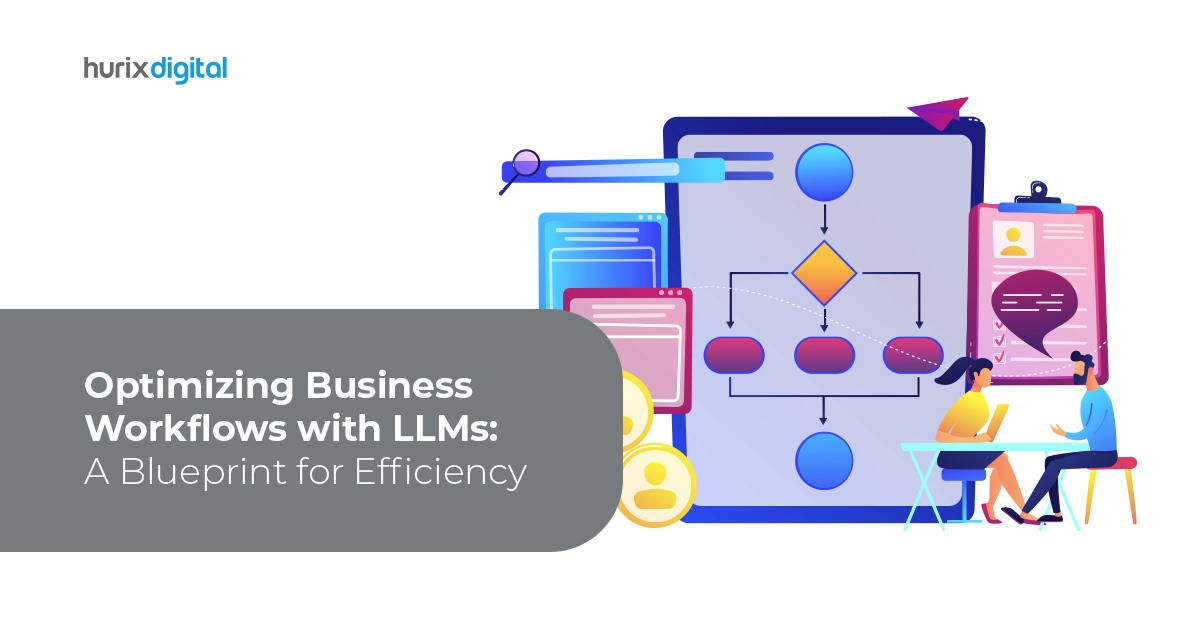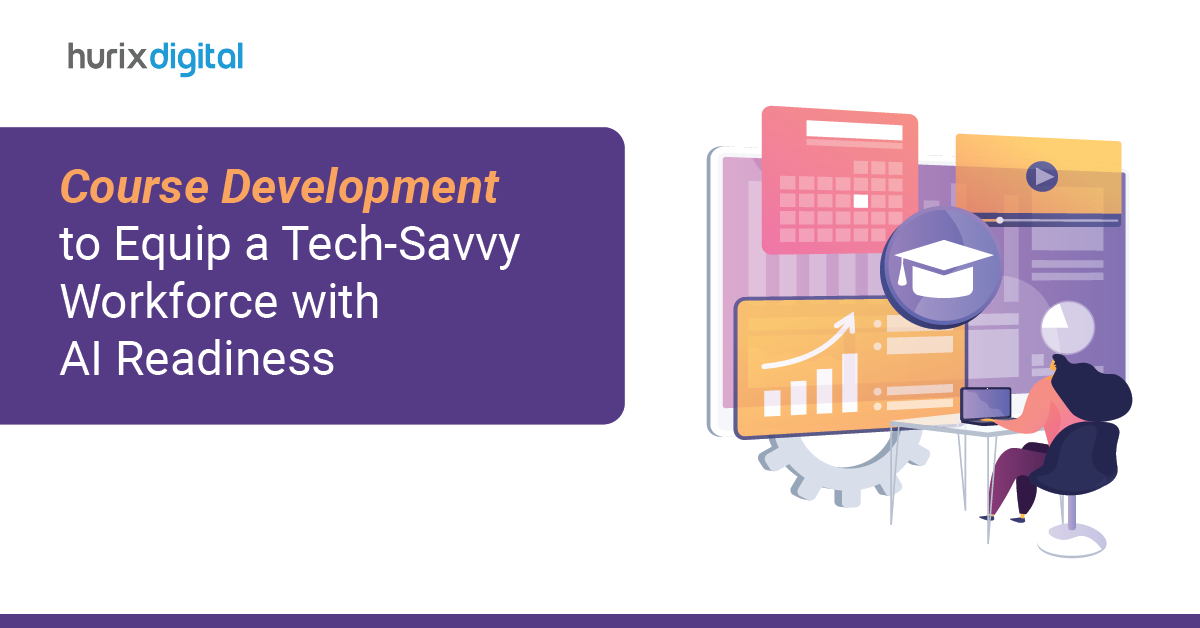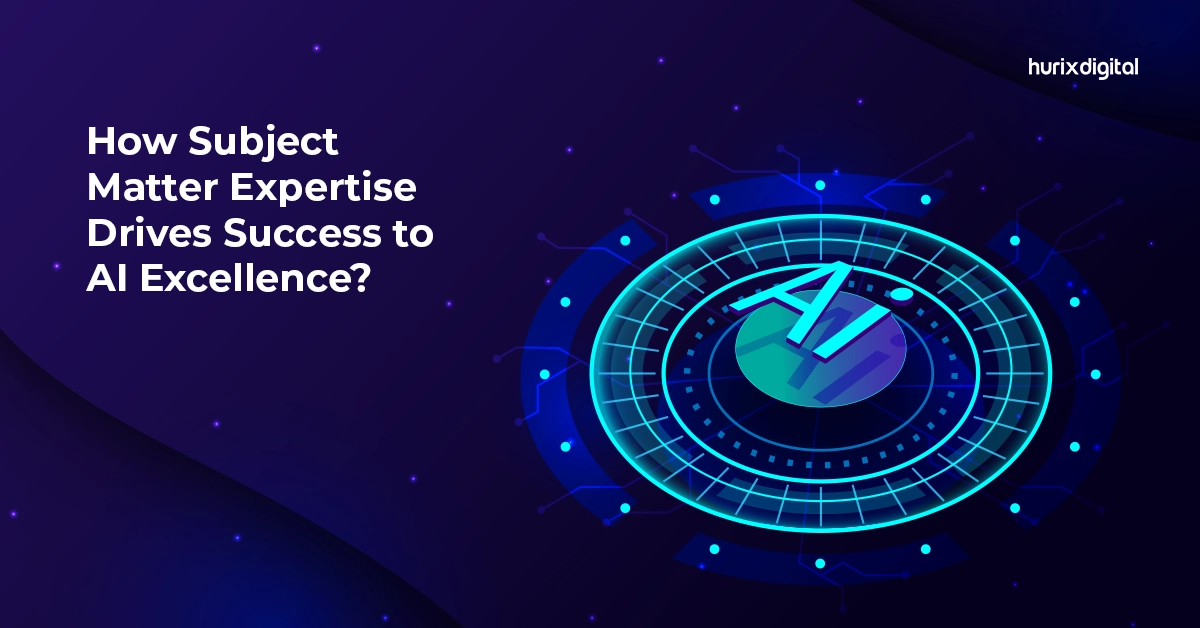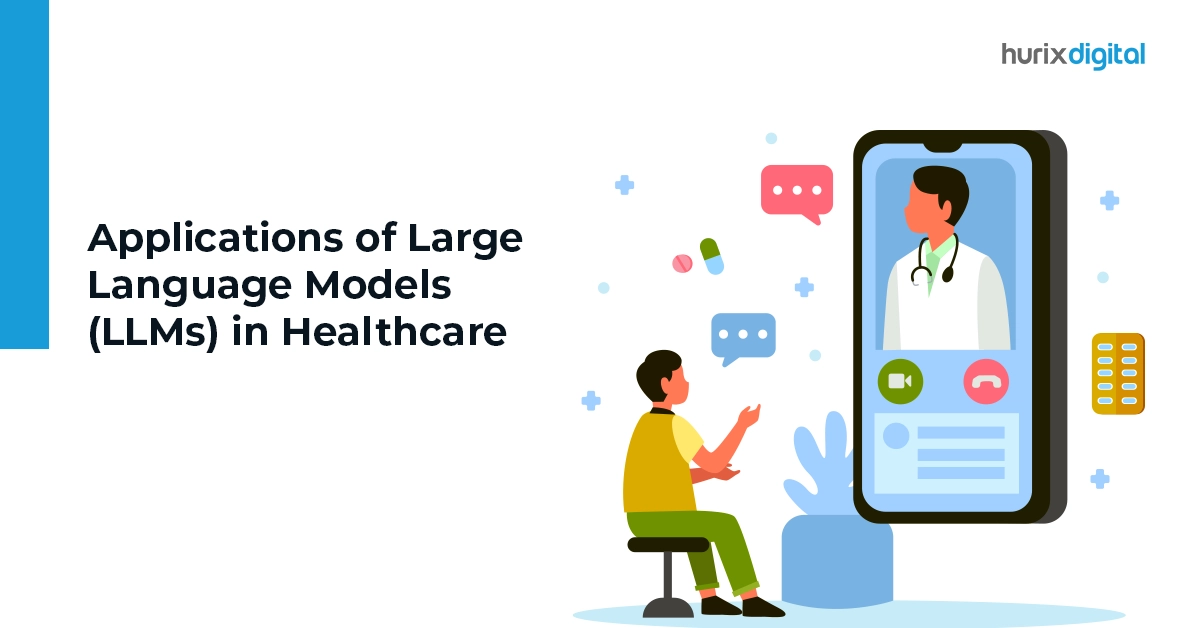
Optimizing Business Workflows with LLMs: A Blueprint for Efficiency
Summary
Learn how large language models (LLMs) can optimize business workflows. This article provides a blueprint for using LLMs to improve efficiency and streamline operations.
Business workflow optimization is carried out through interactive and accessible resources that automate certain aspects of the workload. Everyone has tried it – ranging from writing essays to entering large copies of data or even making presentations.
Language model implementation has brushed away the rigid rules and limited scalability of traditional tools. They are even more effective without human intervention. The objective is to enhance the efficiency of AI-powered business optimization.
Table of Contents:
- What Constitutes an LLM?
- Significance of Language Model Integration
- Utilizing LLMs for AI-driven Workflow Optimization in Businesses: Key Considerations and Role
- Benefits of Employing Language Model Solutions for Businesses
- Conclusion
What Constitutes an LLM?
An LLM, short for Large Language Model, is a form of specialized artificial intelligence designed to produce text that looks like human-generated content. The biggest example of an LLM is OpenAI’s GPT-4 which can comprehend context, generate appropriate responses, and execute complex tasks.
Language model solutions for businesses lead to lower human error and high productivity and ROI. Language model integration broadly enhances language processing functionalities like automation of personalized content, facilitation of support interactions, or extraction of key business insights.
However, the current LLMs in business operations are not the final or best version, as they still necessitate training on extensive datasets. Undoubtedly, the versatility of language model implementation surpasses linguistic skills. Nevertheless, there is still a need to understand relationships, encompassing data analysis and solidifying customer interaction.
Significance of Language Model Integration
Businesses need to identify challenges or areas of operational inefficiency within their workflows. They must employ LLMs to analyze, process data, offer insights, and rectify challenges.
Likewise, language model solutions for businesses empower AIs to work on large data sets, comprehend user needs based on NLP inputs, and then present the data effectively.
Let us look at key examples here:
- Coca-Cola integrates AI into modern vending machines and connects with the Coca-Cola Freestyle app. It helps with valuable data for optimizing sales strategies.
- User engagement is strengthened through chatbots on platforms like Facebook Messenger. They are well-equipped with AI advancements to adapt language and personality according to users.
- Johnson & Johnson has utilized AI and LLMs to process scientific literature, for drug development.
Also Read: How AI is Revolutionizing Design with Adobe Photoshop in 2024?
Utilizing LLMs for AI-driven Workflow Optimization in Businesses: Key Considerations and Role
Leveraging language models for efficiency helps businesses handle complicated tasks, and alleviate the burden associated with manual work.
Let us look at some important strategies to enhance the role of LLMs in today’s industrial infrastructure:
Strategy 1 – Initiate LLMs in Business Operations
Business workflow optimization is imperative in today’s corporate environment, where leaders are grappling with process management challenges. LLMs in business operations emerge as a fundamental solution for businesses that want to remain relevant during this rapid change. Implementing LLMs in business operations involves:
- Step 1 – Assessing the requirements of the task at hand
- Step 2 – Leveraging language models for efficiency
- Step 3 – Training the model using relevant data sets
- Step 4 – Refining the model based on feedback and metrics
Strategy 2 – Language Model Implementation in Customer Interaction
LLMs enhance customer support services by powering applications and tools like:
- Intelligent chatbots
- ChatGPT
- Google’s PaLM 2
These rich resources come with exclusive features like applying logic, common sense, reasoning, and even advanced coding, with proficiency across diverse languages.
Strategy 3 – Personalized Customer Experiences
AI-driven workflow optimization through LLMs includes data analysis and adaptive learning algorithms. LLMs facilitate highly personalized interactions with customers, which enhance customer satisfaction and promote sustained engagement.
Strategy 4 – Improving Decision-making Processes
LLMs collect, analyze, and present data that empowers leaders to delve into insightful decision-making processes based on real-time insights and comprehensive data analysis.
Strategy 5 – Enhancing Collaboration and Communication
Leveraging language models for efficiency facilitates real-time document editing and feedback exchange. Eventually, this drives business workflow optimization, which leads to a productive work environment and organizational success. Further, it enables efficient information exchange and a culture of teamwork and innovation.
Strategy 6 – Follow Best Practices for LLM Implementation
It’s crucial to pinpoint tasks that are suitable for automation. Choose tasks that involve repetitive processes, natural language understanding, or content generation. Other best practices are:
- Start with a small-scale pilot project, assess the effectiveness of LLM, refine strategies, and identify potential hurdles before scaling up.
- Process ongoing adjustments and optimization to align with specific requirements.
- Regularly monitor LLM performance, gather user feedback, and make necessary adaptations.
Benefits of Employing Language Model Solutions for Businesses
Some of the key advantages of language model implementation are:
- Enhanced Time Management: By automating various business processes with LLMs, developers now save significant time, resulting in a more efficient project management journey.
- Promotes Training: LLMs offer a remedy by generating a diverse and expansive set of training examples.
- Facilitates Multilingual Intent: LLMs generate intent examples in multiple languages, which translates to cost savings for businesses.
- Automated Response Generation Powered by LLMs: This crafts suitable responses, encourages collaboration between developers and designers and enables automatic response generation across various channels of customer interaction.
- LLM-driven Flow Generation: Leveraging language models for efficiency, developers now only provide the flow’s name and description. LLMs then automate the entire process and further generate all necessary nodes within the flow.
- Mitigation of Human Error: LLM-driven node generation minimizes human errors, ensuring accuracy throughout the process.
- AI-Powered Business Optimization of Employee Performance: Automating tasks frees up agents’ time, enabling them to focus on addressing more complex issues.
- Enhancement of Customer Experience: With additional time for engagement, employees can provide personalized attention to clients, thereby improving the quality of the customer experience.
Also Read: Tech-Forward Training: Integrating Digital Tools in Workforce Learning
Conclusion
Embracing LLMs in business operations signifies a significant shift towards unparalleled productivity in business workflows, which aim to revolutionize global business operations.
Large Language Models represent more than just technological progress; they cut costs, boost employee engagement, expedite AI-driven workflow optimization in businesses, and enhance productivity. This is just the beginning of the transformative impact. The future of business will witness extensive AI integration as a supportive tool for all organizational tasks.
With Hurix Digital, organizations can optimize their content, data, and assessment platforms with the smart use of generative AI, automation, and machine learning.
To learn more, Contact us today!

Performance, Results, Growth, and Life-Long Learning define my professional life. I am passionate about making workplace learning planful, purposeful, and impactful. I take pride in partnering with clients and bringing them the best in learning design and creating solutions that address business challenges.







